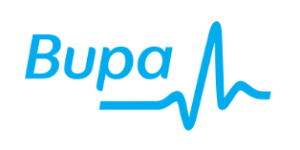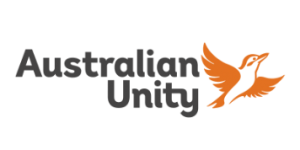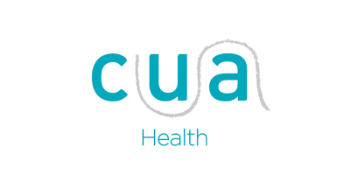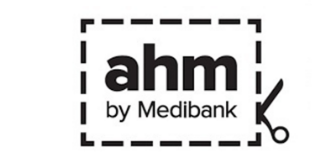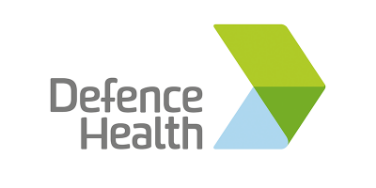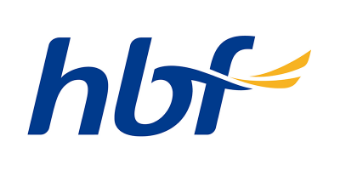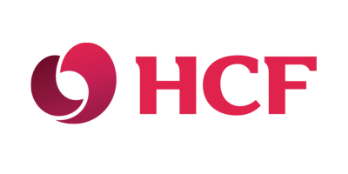Brisbane has great weather for sports and running – so we see a lot of Achilles tendinopathy at Sports Massage Brisbane (Knead Massage) – Achilles pain can resolve quickly with expert advice.
- The Achilles tendon (technically the calcaneal tendon) is a strong tendonous structure that attaches the calf muscles to the heel.
- The anchor point of the tendon pulls the heel off the ground (technically the calves pull) when performing gait related tasks such as walking, running, jumping, or tippy toes.
- An Achilles tendinopathy is an overuse condition – usually associated with new or infrequent activities – such as return to running or football after time off.
- The science is very clear. Special loading called eccentric loading has been proven to restore collagen health to irritable tendons.
- An effective pain management strategy for Achilles pain should include – eccentric loading to resolve the cause of the pain, manual therapy to reduce pain and muscular overload and improve function and education around the aggravating activity.
This article will discuss the common types of Achilles pain, what can cause Achilles pain and of course how to stop Achilles pain. Impatient for pain free running? Hit the book now button and we’ll help make pain a memory.
What can cause Achilles pain?
There are three general classifications for Achilles tendon irritation:
- Achilles Tendinitis describes a swollen inflamed tendon –without collagen damage to the tissue. An angry tendon if you will
- Achilles tendinosis describes a chronic condition (3 months or longer) where the collagen in the tendon has become damaged (the substance that makes the tendon). The pain is actually a sign of your body trying to heal damage, but in a disordered way – knitting without a plan leaving a rubbery thickened, hard feeling tendon.
- Achilles tendinopathy describes loss of collagen in the tendon, leaving a swiss cheese type appearance on ultrasound. The remaining collagen is usually very strong – despite pain.
In recent years all tendon irritations tend to be referred to as tendinopathy – as the way to load them and reduce pain is exactly the same.
How does Achilles tendinopathy occur?
Tendinopathies most frequently occur as a result of performing a task you are not accustomed to (too much too soon). The pain is often an inflammatory response to micro tears or repeated compression (which tendons aren’t well designed for). A tendonosis occurs when tears happen without inflammation as a result of collagen degeneration (hormonal change in the 40+ age group can change collagen into less robust forms).
Achilles tendinopathy is frequently caused by increasing running or jumping load too quickly (more than 10%/week increases), returning to sport after time off (new season or after a layoff for injury or life commitments), adding a new element to your training such as plyometric jumping, sprints or hill sprints or long hikes when you haven’t been hiking for a while.
There is research suggesting that high body mass individuals are more likely to suffer from Achilles tendinopathy.
Where is Achilles tendon pain?
Achilles tendon pain usually occurs in one of two locations:
- Insertional – when the irritation occurs at the junction of the tendon on the bone (also sometimes called an enthesopathy) – below the body of the tendon.
- Mid portion – where the pain and irritation occur in the ropey part above the bone (usually 1-2cm above the junction)
What does Achilles tendon pain feel like?
- Sore to touch
- Pain on the first few steps of the day or after lengthy sitting. Morning pain frequently occurs in all tendinopathies as the collagen receives very little circulation at rest and will be flooded with inflammatory substances until blood flow reduces their concentrations.
- the tendon warms up from walking or consistent running and pain temporarily decreases.
- Pain worsens after stopping an activity.
- Explosive activities such as sprinting, tennis, netball, soccer and basketball usually aggravate the pain.
Achilles Tendinopathy Brisbane -What to do for Achilles pain?
Progressive loading strategies are the scientifically validated how to fix Achilles pain method – particularly eccentric loading. Tendons need to adapt gradually to new load – especially when irritable (but also when healthy).
- Reduce or stop the aggravating activity.
- Consult with a Myotherapist or sports massage therapist to find the best loading solution to restore collagen health.
- Reduce muscular contribution to tendon irritation through soft tissue work such as sports massage, dry needling and low level laser.
- Stretch the calves daily.
- Maintain fitness by finding a cross training activity that improves blood flow without overloading the tendon – usually cycling, swimming or rowing machine.
- Some people find 20 minutes of ice pack post exercise reduces pain.
What shouldn’t you do for Achilles Pain?
- The science is VERY clear – cortisone is very bad for tendon health – symptoms may reduce for a few weeks after cortisone, but the condition will take a lot longer to resolve as cortisone changes collagen from a strong flexible form into a brittle less robust form (it ages the tendon).
- Do not stop exercise. Tendon health requires load within a range. Too much load creates overuse condition and not enough creates collagen deterioration. Pain may stop after a week of inactivity – until you run again. Find an appropriate loading strategy to restore tendon capacity. Your Myotherapist can guide you.
How long for Achilles tendinopathy to heal?
The great news is that recent onset Achilles pain can resolve in only a few weeks with expert treatment. Studies suggest that results can occur in as little as 2 weeks with optimum outcomes occurring by week 12 for more established Achilles pain. However if you’ve had symptoms for 12 months or more, it may take up to 6 months to resolve. Don’t waste money treating symptoms – treat the cause with appropriate loading.
How to fix Achilles pain?
- Learn how to load the tendon progressively and learn the correct eccentric loading strategy such as the alfredson heel drop protocol from a Myotherapist or qualified sports massage therapist.
- Reduce the offending activity, while finding alternative exercises such as cycling or swimming.
- Maintain physical capacity with cross training.
- Learn the best stretch for your anatomy to reduce calf tension and gently load the tendon.
- De-load the calf muscles with expert remedial massage or Myotherapy.
- Target the inflammatory response in the Achilles tendon disease with a combination low level laser and calf loading.
Frequently Asked Questions (FAQs)
The most common cause of Achilles pain when running is an irritation in the tendon called a tendinopathy – which frequently occur as a result of performing a task you are not accustomed to (too much too soon). The pain is often an inflammatory response to micro tears or repeated compression (which tendons aren’t well designed for). A tendonosis occurs when tears happen without inflammation as a result of collagen degeneration (hormonal change in the 40+ age group can change collagen into less robust forms).
Achilles tendinopathy is frequently caused by increasing running (often adding hll training) or jumping load too quickly (more than 10%/week increases), returning to sport after time off (new season or after a layoff for injury or life commitments), adding a new element to your training such as plyometric jumping, sprints or hill sprints or long hikes when you haven’t been hiking for a while.
The pain is often an inflammatory response to micro tears or repeated compression (which tendons aren’t well designed for). A tendonosis occurs when tears happen without inflammation as a result of collagen degeneration (hormonal change in the 40+ age group can change collagen into less robust forms).
The pain is often an inflammatory response to micro tears or repeated compression (which tendons aren’t well designed for). A tendonosis occurs when tears happen without inflammation as a result of collagen degeneration (hormonal change in the 40+ age group can change collagen into less robust forms).
The pain is often an inflammatory response to micro tears or repeated compression (which tendons aren’t well designed for). A tendonosis occurs when tears happen without inflammation as a result of collagen degeneration (hormonal change in the 40+ age group can change collagen into less robust forms).
The most common cause of Achilles pain when running is an irritation in the tendon called a tendinopathy – which frequently occur as a result of performing a task you are not accustomed to (too much too soon). The pain is often an inflammatory response to micro tears or repeated compression (which tendons aren’t well designed for). A tendonosis occurs when tears happen without inflammation as a result of collagen degeneration (hormonal change in the 40+ age group can change collagen into less robust forms).
Achilles tendinopathy is frequently caused by increasing running (often adding hll training) or jumping load too quickly (more than 10%/week increases), returning to sport after time off (new season or after a layoff for injury or life commitments), adding a new element to your training such as plyometric jumping, sprints or hill sprints or long hikes when you haven’t been hiking for a while.
The term insertional means that the irritation is close to the insertion of the tendon to the bone.
The pain is often an inflammatory response to micro tears or repeated compression (which tendons aren’t well designed for). A tendonosis occurs when tears happen without inflammation as a result of collagen degeneration (hormonal change in the 40+ age group can change collagen into less robust forms).
Achilles tendinopathy is frequently caused by increasing running (often adding hll training) or jumping load too quickly (more than 10%/week increases), returning to sport after time off (new season or after a layoff for injury or life commitments), adding a new element to your training such as plyometric jumping, sprints or hill sprints or long hikes when you haven’t been hiking for a while.
The most common cause of Achilles pain when running is an irritation in the tendon called a tendinopathy – which frequently occur as a result of performing a task you are not accustomed to (too much too soon). The pain is often an inflammatory response to micro tears or repeated compression (which tendons aren’t well designed for). A tendonosis occurs when tears happen without inflammation as a result of collagen degeneration (hormonal change in the 40+ age group can change collagen into less robust forms).
The most common cause of Achilles pain when running is an irritation in the tendon called a tendinopathy – which frequently occur as a result of performing a task you are not accustomed to (too much too soon). The pain is often an inflammatory response to micro tears or repeated compression (which tendons aren’t well designed for). A tendonosis occurs when tears happen without inflammation as a result of collagen degeneration (hormonal change in the 40+ age group can change collagen into less robust forms).
The most common cause of Achilles pain is an irritation in the tendon called a tendinopathy – which frequently occur as a result of performing a task you are not accustomed to (too much too soon) or overloading the tendon without sufficient rest. The dancing population tend to practice daily and tendon overload can occur.
The pain is often an inflammatory response to micro tears or repeated compression (which tendons aren’t well designed for). A tendonosis occurs when tears happen without inflammation as a result of collagen degeneration (hormonal change in the 40+ age group can change collagen into less robust forms).
The most common cause of Achilles pain when running is an irritation in the tendon called a tendinopathy – which frequently occur as a result of performing a task you are not accustomed to (too much too soon). The pain is often an inflammatory response to micro tears or repeated compression (which tendons aren’t well designed for). A tendonosis occurs when tears happen without inflammation as a result of collagen degeneration (hormonal change in the 40+ age group can change collagen into less robust forms).
Achilles tendinopathy is frequently caused by increasing running (often adding hll training) or jumping load too quickly (more than 10%/week increases), returning to sport after time off (new season or after a layoff for injury or life commitments), adding a new element to your training such as plyometric jumping, sprints or hill sprints or long hikes when you haven’t been hiking for a while.
A chronic Achilles tendinopathy is usually a result of incorrect load management. The tendon needs to be used to improve the quality of the damaged collagen. Frequently people stop loading the tendon under the mistaken belief that resting the tendon will take pain away. Resting for a couple of weeks may temporarily reduce symptoms, but they return quickly when the tendon is stressed by activities such as walking, jogging or jumping.
Excessive use of cortisone can also further deteriorate tendon health. Cortisone may provide a few weeks relief, but it actually creates more problems for the tendon. Correct load management (eccentric) is the best way to resolve chronic Achilles tendinopathy.
A chronic Achilles tendinopathy is usually a result of incorrect load management. The tendon needs to be used to improve the quality of the damaged collagen. Frequently people stop loading the tendon under the mistaken belief that resting the tendon will take pain away. Resting for a couple of weeks may temporarily reduce symptoms, but they return quickly when the tendon is stressed by activities such as walking, jogging or jumping.
Excessive use of cortisone can also further deteriorate tendon health. Cortisone may provide a few weeks relief, but it actually creates more problems for the tendon. Correct load management (eccentric) is the best way to resolve chronic Achilles tendinopathy.
A tendinopathy with calcification occurs when an irritable tendon has become chronic (ongoing – usually for calcification to occur 6 months or more). The calcification is the the damaged collagen of the tendon trying to adapt to overload by becoming stronger.
A tendinopathy with bone spur or calcification occurs when an irritable tendon has become chronic (ongoing – usually for calcification to occur 6 months or more). The calcification is the the damaged collagen of the tendon trying to adapt to overload by becoming stronger.
A tendon irritation may occur as a result of performing a task you are not accustomed to (too much too soon). The pain is often an inflammatory response to micro tears or repeated compression (which tendons aren’t well designed for). A tendonosis occurs when tears happen without inflammation as a result of collagen degeneration (hormonal change in the 40+ age group can change collagen into less robust forms). The bursitis is an inflammation in a structure called a bursar – which sits between the tendon and the bone to reduce inflammation. If the load is significant enough to irritate the tendon, the bursar is likely to be inflamed also.
Load management is the same for tendinitis and bursitis – eccentric loading. If you are getting cortisone – do not get it applied to the tendon – only the bursar. Cortisone destroys collagen integrity in tendons.
Most Achilles tendon irritations involve heel pain.
The pain is often an inflammatory response to micro tears or repeated compression (which tendons aren’t well designed for). A tendonosis occurs when tears happen without inflammation as a result of collagen degeneration (hormonal change in the 40+ age group can change collagen into less robust forms).
A secondary cause of heel pain that occurs in tandem with tendon irritation is called bursitis – an inflammation in a structure called a bursar – which sits between the tendon and the bone to reduce inflammation. If the load is significant enough to irritate the tendon, the bursar is likely to be inflamed also.
Load management is the same for tendinitis and bursitis – eccentric loading. If you are getting cortisone – do not get it applied to the tendon – only the bursar. Cortisone destroys collagen integrity in tendons.
Any pain in the knees after Achilles tendon pain is usually associated with altered gait mechanics (changing the way you walk) to avoid pain. Consult with a Myotherapist early for a solution to both of your pain states before chronicity.
A tendinopathy with calcification occurs when an irritable tendon has become chronic (ongoing – usually for calcification to occur 6 months or more). The calcification is the the damaged collagen of the tendon trying to adapt to overload by becoming stronger.
This is a common double whammy in both the extremely fit and high body mass individuals. Both conditions are overuse states and result from too much load too soon or too much load. Runners and change of direction sports such as soccer/football tend to develop this combination – often after returning to pre season training.
Heavier individuals that are on their feet for work often report this combination. The tendons are overloaded and possibly changing their quality as a result of hormonal change (usually 40 years plus).
Absolutely. An irritable tendon will cause the muscle to overwork to absorb load – resulting in spasm and irritation in the muscle itself.
Any pain in the knees after Achilles tendon pain is usually associated with altered gait mechanics (changing the way you walk) to avoid pain. Consult with a Myotherapist early for a solution to both of your pain states before chronicity.
Yes definitely! Progressive loading strategies are the scientifically validated how to fix Achilles pain method – particularly eccentric loading. Tendons need to adapt gradually to new load – especially when irritable (but also when healthy).
A tendinopathy is ultimately a change in the collagen health of the tendon. The best way to change collagen from less flexible painful collagen into healthier more robust collagen is through correct loading such as eccentric calf raises. It is however important to:
- Reduce or stop the aggravating activity.
- Consult with a Myotherapist or sports massage therapist to find the best loading solution to restore collagen health.
- Reduce muscular contribution to tendon irritation through soft tissue work such as sports massage, dry needling and low level laser.
- Stretch the calves daily.
- Maintain fitness by finding a cross training activity that improves blood flow without overloading the tendon – usually cycling, swimming or rowing machine.
It is extremely unlikely to have a tendinopathy so extreme that it does not respond to a suitable load strategy. Progressive loading strategies are the scientifically validated how to fix Achilles pain method – particularly eccentric loading. Tendons need to adapt gradually to new load – especially when irritable (but also when healthy).
A tendinopathy is ultimately a change in the collagen health of the tendon. The best way to change collagen from less flexible painful collagen into healthier more robust collagen is through correct loading such as eccentric calf raises. It is howeverimportant to:
- Reduce or stop the aggravating activity.
- Consult with a Myotherapist or sports massage therapist to find the best loading solution to restore collagen health.
- Reduce muscular contribution to tendon irritation through soft tissue work such as sports massage, dry needling and low level laser.
- Stretch the calves daily.
- Maintain fitness by finding a cross training activity that improves blood flow without overloading the tendon – usually cycling, swimming or rowing machine.
Any pain in the knees after Achilles tendon pain is usually associated with altered gait mechanics (changing the way you walk) to avoid pain. Consult with a Myotherapist early for a solution to both of your pain states before chronicity.
This is theoretically possible, but somewhat unusual. The most common cause of swelling in the calf region is related to hypertension and lymphatic flow. If you are unable to walk, the muscle pump mechanism that returns excess lymphatic fluid is compromised and unable to overcome gravity to return to thorax, where the lymphatic recepticles are situated.
Calf swelling can indicate hypertension and kidney dysfunction – so it is important to consult your GP if you have these symptoms.
Without performing an assessment on you – this question can’t be answered accurately. Current physiotherapy research indicates that some running (usually10-15% of usual load) may be tolerated every 3 days to maintain some cardiovascular health and load tolerance. Running without performing the correct eccentric loading is a recipe for increased pain and duration of symptoms.
Achilles tendinopathy is frequently caused by increasing running (often adding hll training) or jumping load too quickly (more than 10%/week increases), returning to sport after time off (new season or after a layoff for injury or life commitments), adding a new element to your training such as plyometric jumping, sprints or hill sprints or long hikes when you haven’t been hiking for a while.
As with any overload condition managing load should be the first consideration to reduce symptoms. If walking has caused the overload mechanism, it is likely that walking the same distance without modifying the terrain, footwear, distance, frequency or incorporating therapeutic exercises will elad to chronic tendinopathy which can become calcific – and unbearably painful.
Consult with a Myotherapist to find a pain relieving exercise that restores the damaged collagen into a more robust, less painful form.
Sciatica pain can refer to the foot and calf. Consult with a Myotherapist to find out if you have Achilles pain caused by sciatica, tendinopathy or both.
In theory, shoe choice can contribute to Achilles tendinopathy, but ultimately the pain is an inflammatory response to micro tears or repeated compression (which tendons aren’t well designed for). A tendonosis occurs when tears happen without inflammation as a result of collagen degeneration (hormonal change in the 40+ age group can change collagen into less robust forms).
The most common cause of Achilles tendinopathy occurs as a result of performing a task you are not accustomed to (too much too soon) or overloading the tendon without sufficient rest.
Without performing an assessment on you – this question can’t be answered accurately. Current physiotherapy research indicates that some running (usually10-15% of usual load) may be tolerated every 3 days to maintain some cardiovascular health and load tolerance. Running without performing the correct eccentric loading is a recipe for increased pain and duration of symptoms.
Achilles tendinopathy is frequently caused by increasing running (often adding hll training) or jumping load too quickly (more than 10%/week increases), returning to sport after time off (new season or after a layoff for injury or life commitments), adding a new element to your training such as plyometric jumping, sprints or hill sprints or long hikes when you haven’t been hiking for a while.
The pain is often an inflammatory response to micro tears or repeated compression (which tendons aren’t well designed for). A tendonosis occurs when tears happen without inflammation as a result of collagen degeneration (hormonal change in the 40+ age group can change collagen into less robust forms).
Load management is key to reducing pain and irritation in the collagen of the tendon. Eccentric loading has been scientifically shown to reduce tendon pain and improve collagen quality. It is important to keep walking within tolerance – as the tendon NEEDS load to maintain health.
The pain is often an inflammatory response to micro tears or repeated compression (which tendons aren’t well designed for). A tendonosis occurs when tears happen without inflammation as a result of collagen degeneration (hormonal change in the 40+ age group can change collagen into less robust forms).
The most common cause of Achilles pain when running is an irritation in the tendon called a tendinopathy – which frequently occur as a result of performing a task you are not accustomed to (too much too soon). The pain is often an inflammatory response to micro tears or repeated compression (which tendons aren’t well designed for). A tendonosis occurs when tears happen without inflammation as a result of collagen degeneration (hormonal change in the 40+ age group can change collagen into less robust forms).
Tendinopathy is usually diagnosed by your symptoms and onset. Another method is applying pain relieving exercises – if the exercises take your pain away it indicates tendinopathy. But ultimately if you or your clinician are unsure ultrasound or MRI are the imaging methods that best determine the presence of tendon irritation.
This depends on how long you have had symptoms, if you are limiting the aggravating activities, if you are seeing an expert clinician and if you have found a pain relieving exercise and are performing it at least 5 times per week. There is no simple formula – but if there were it would probably read like 1-2 weeks per month of irritation.
This depends on how long you have had symptoms, if you are limiting the aggravating activities, if you are seeing an expert clinician and if you have found a pain relieving exercise and are performing it at least 5 times per week. There is no simple formula – but if there were it would probably read like 1-2 weeks per month of irritation.
Progressive loading strategies are the scientifically validated how to fix Achilles pain method – particularly eccentric loading. Tendons need to adapt gradually to new load – especially when irritable (but also when healthy).
A tendinopathy is ultimately a change in the collagen health of the tendon. The best way to change collagen from less flexible painful collagen into healthier more robust collagen is through correct loading such as eccentric calf raises. It is howeverimportant to:
- Reduce or stop the aggravating activity.
- Consult with a Myotherapist or sports massage therapist to find the best loading solution to restore collagen health.
- Reduce muscular contribution to tendon irritation through soft tissue work such as sports massage, dry needling and low level laser.
- Stretch the calves daily.
- Maintain fitness by finding a cross training activity that improves blood flow without overloading the tendon – usually cycling, swimming or rowing machine.
Progressive loading strategies are the scientifically validated how to fix Achilles pain method – particularly eccentric loading. Tendons need to adapt gradually to new load – especially when irritable (but also when healthy).
A tendinopathy is ultimately a change in the collagen health of the tendon. The best way to change collagen from less flexible painful collagen into healthier more robust collagen is through correct loading such as eccentric calf raises. It is however important to:
- Reduce or stop the aggravating activity.
- Consult with a Myotherapist or sports massage therapist to find the best loading solution to restore collagen health.
- Reduce muscular contribution to tendon irritation through soft tissue work such as sports massage, dry needling and low level laser.
- Stretch the calves daily.
- Maintain fitness by finding a cross training activity that improves blood flow without overloading the tendon – usually cycling, swimming or rowing machine.
Progressive loading strategies are the scientifically validated how to fix Achilles pain method – particularly eccentric loading. Tendons need to adapt gradually to new load – especially when irritable (but also when healthy).
A tendinopathy is ultimately a change in the collagen health of the tendon. The best way to change collagen from less flexible painful collagen into healthier more robust collagen is through correct loading such as eccentric calf raises. It is however important to:
- Reduce or stop the aggravating activity.
- Consult with a Myotherapist or sports massage therapist to find the best loading solution to restore collagen health.
- Reduce muscular contribution to tendon irritation through soft tissue work such as sports massage, dry needling and low level laser.
- Stretch the calves daily.
- Maintain fitness by finding a cross training activity that improves blood flow without overloading the tendon – usually cycling, swimming or rowing machine.
Progressive loading strategies are the scientifically validated how to fix Achilles pain method – particularly eccentric loading. Tendons need to adapt gradually to new load – especially when irritable (but also when healthy).
A tendinopathy is ultimately a change in the collagen health of the tendon. The best way to change collagen from less flexible painful collagen into healthier more robust collagen is through correct loading such as eccentric calf raises. It is however important to:
- Reduce or stop the aggravating activity.
- Consult with a Myotherapist or sports massage therapist to find the best loading solution to restore collagen health.
- Reduce muscular contribution to tendon irritation through soft tissue work such as sports massage, dry needling and low level laser.
- Stretch the calves daily.
- Maintain fitness by finding a cross training activity that improves blood flow without overloading the tendon – usually cycling, swimming or rowing machine.
Progressive loading strategies are the scientifically validated how to fix Achilles pain method – particularly eccentric loading. Tendons need to adapt gradually to new load – especially when irritable (but also when healthy).
A tendinopathy is ultimately a change in the collagen health of the tendon. The best way to change collagen from less flexible painful collagen into healthier more robust collagen is through correct loading such as eccentric calf raises. It is however important to:
- Reduce or stop the aggravating activity.
- Consult with a Myotherapist or sports massage therapist to find the best loading solution to restore collagen health.
- Reduce muscular contribution to tendon irritation through soft tissue work such as sports massage, dry needling and low level laser.
- Stretch the calves daily.
- Maintain fitness by finding a cross training activity that improves blood flow without overloading the tendon – usually cycling, swimming or rowing machine.
Progressive loading strategies are the scientifically validated how to fix Achilles pain method – particularly eccentric loading. Tendons need to adapt gradually to new load – especially when irritable (but also when healthy).
A tendinopathy is ultimately a change in the collagen health of the tendon. The best way to change collagen from less flexible painful collagen into healthier more robust collagen is through correct loading such as eccentric calf raises. It is however important to:
- Reduce or stop the aggravating activity.
- Consult with a Myotherapist or sports massage therapist to find the best loading solution to restore collagen health.
- Reduce muscular contribution to tendon irritation through soft tissue work such as sports massage, dry needling and low level laser.
- Stretch the calves daily.
- Maintain fitness by finding a cross training activity that improves blood flow without overloading the tendon – usually cycling, swimming or rowing machine.
Progressive loading strategies are the scientifically validated how to fix Achilles pain method – particularly eccentric loading. Tendons need to adapt gradually to new load – especially when irritable (but also when healthy).
A tendinopathy is ultimately a change in the collagen health of the tendon. The best way to change collagen from less flexible painful collagen into healthier more robust collagen is through correct loading such as eccentric calf raises. It is however important to:
- Reduce or stop the aggravating activity.
- Consult with a Myotherapist or sports massage therapist to find the best loading solution to restore collagen health.
- Reduce muscular contribution to tendon irritation through soft tissue work such as sports massage, dry needling and low level laser.
- Stretch the calves daily.
- Maintain fitness by finding a cross training activity that improves blood flow without overloading the tendon – usually cycling, swimming or rowing machine.
Progressive loading strategies are the scientifically validated how to fix Achilles pain method – particularly eccentric loading. Tendons need to adapt gradually to new load – especially when irritable (but also when healthy).
A tendinopathy is ultimately a change in the collagen health of the tendon. The best way to change collagen from less flexible painful collagen into healthier more robust collagen is through correct loading such as eccentric calf raises. It is however important to:
- Reduce or stop the aggravating activity.
- Consult with a Myotherapist or sports massage therapist to find the best loading solution to restore collagen health.
- Reduce muscular contribution to tendon irritation through soft tissue work such as sports massage, dry needling and low level laser.
- Stretch the calves daily.
- Maintain fitness by finding a cross training activity that improves blood flow without overloading the tendon – usually cycling, swimming or rowing machine.
Progressive loading strategies are the scientifically validated how to fix Achilles pain method – particularly eccentric loading. Tendons need to adapt gradually to new load – especially when irritable (but also when healthy).
A tendinopathy is ultimately a change in the collagen health of the tendon. The best way to change collagen from less flexible painful collagen into healthier more robust collagen is through correct loading such as eccentric calf raises. It is however important to:
- Reduce or stop the aggravating activity.
- Consult with a Myotherapist or sports massage therapist to find the best loading solution to restore collagen health.
- Reduce muscular contribution to tendon irritation through soft tissue work such as sports massage, dry needling and low level laser.
- Stretch the calves daily.
- Maintain fitness by finding a cross training activity that improves blood flow without overloading the tendon – usually cycling, swimming or rowing machine.
Progressive loading strategies are the scientifically validated how to fix Achilles pain method – particularly eccentric loading. Tendons need to adapt gradually to new load – especially when irritable (but also when healthy).
A tendinopathy is ultimately a change in the collagen health of the tendon. The best way to change collagen from less flexible painful collagen into healthier more robust collagen is through correct loading such as eccentric calf raises. It is however important to:
- Reduce or stop the aggravating activity.
- Consult with a Myotherapist or sports massage therapist to find the best loading solution to restore collagen health.
- Reduce muscular contribution to tendon irritation through soft tissue work such as sports massage, dry needling and low level laser.
- Stretch the calves daily.
- Maintain fitness by finding a cross training activity that improves blood flow without overloading the tendon – usually cycling, swimming or rowing machine.
It is extremely unlikely to have a tendinopathy so extreme that it does not respond to a suitable load strategy. Progressive loading strategies are the scientifically validated how to fix Achilles pain method – particularly eccentric loading. Tendons need to adapt gradually to new load – especially when irritable (but also when healthy).
A tendinopathy is ultimately a change in the collagen health of the tendon. The best way to change collagen from less flexible painful collagen into healthier more robust collagen is through correct loading such as eccentric calf raises. It is however important to:
- Reduce or stop the aggravating activity.
- Consult with a Myotherapist or sports massage therapist to find the best loading solution to restore collagen health.
- Reduce muscular contribution to tendon irritation through soft tissue work such as sports massage, dry needling and low level laser.
- Stretch the calves daily.
- Maintain fitness by finding a cross training activity that improves blood flow without overloading the tendon – usually cycling, swimming or rowing machine.
The pain is often an inflammatory response to micro tears or repeated compression (which tendons aren’t well designed for) or a result of collagen degeneration (hormonal change in the 40+ age group can change collagen into less robust forms). The good news is that with the correct loading strategy (usually eccentric loading) the collagen quality can be improved resulting in reduction or elimination of pain.
The pain is often an inflammatory response to micro tears or repeated compression (which tendons aren’t well designed for) or a result of collagen degeneration (hormonal change in the 40+ age group can change collagen into less robust forms). The good news is that with the correct loading strategy (usually eccentric loading) the collagen quality can be improved resulting in reduction or elimination of pain.
The pain is often an inflammatory response to micro tears or repeated compression (which tendons aren’t well designed for) or a result of collagen degeneration (hormonal change in the 40+ age group can change collagen into less robust forms). The good news is that with the correct loading strategy (usually eccentric loading) the collagen quality can be improved resulting in reduction or elimination of pain.
The pain is often an inflammatory response to micro tears or repeated compression (which tendons aren’t well designed for) or a result of collagen degeneration (hormonal change in the 40+ age group can change collagen into less robust forms). The good news is that with the correct loading strategy (usually eccentric loading) the collagen quality can be improved resulting in reduction or elimination of pain.
The pain is often an inflammatory response to micro tears or repeated compression (which tendons aren’t well designed for) or a result of collagen degeneration (hormonal change in the 40+ age group can change collagen into less robust forms). The good news is that with the correct loading strategy (usually eccentric loading) the collagen quality can be improved resulting in reduction or elimination of pain.
The most common cause of Achilles pain when running is an irritation in the tendon called a tendinopathy – which frequently occur as a result of performing a task you are not accustomed to (too much too soon). The pain is often an inflammatory response to micro tears or repeated compression (which tendons aren’t well designed for). A tendonosis occurs when tears happen without inflammation as a result of collagen degeneration (hormonal change in the 40+ age group can change collagen into less robust forms).
The pain is often an inflammatory response to micro tears or repeated compression (which tendons aren’t well designed for) or a result of collagen degeneration (hormonal change in the 40+ age group can change collagen into less robust forms). The good news is that with the correct loading strategy (usually eccentric loading) the collagen quality can be improved resulting in reduction or elimination of pain.
But pain can be referred to this area from nerve conditions such as sciatica.
The pain is often an inflammatory response to micro tears or repeated compression (which tendons aren’t well designed for) or a result of collagen degeneration (hormonal change in the 40+ age group can change collagen into less robust forms). The good news is that with the correct loading strategy (usually eccentric loading) the collagen quality can be improved resulting in reduction or elimination of pain.
The most common cause of Achilles pain when running is an irritation in the tendon called a tendinopathy – which frequently occur as a result of performing a task you are not accustomed to (too much too soon). The pain is often an inflammatory response to micro tears or repeated compression (which tendons aren’t well designed for). A tendonosis occurs when tears happen without inflammation as a result of collagen degeneration (hormonal change in the 40+ age group can change collagen into less robust forms).
Achilles tendinopathy is frequently caused by increasing running (often adding hll training) or jumping load too quickly (more than 10%/week increases), returning to sport after time off (new season or after a layoff for injury or life commitments), adding a new element to your training such as plyometric jumping, sprints or hill sprints or long hikes when you haven’t been hiking for a while.
The most common cause of Achilles pain an irritation in the tendon called a tendinopathy – which frequently occur as a result of performing a task you are not accustomed to (too much too soon). The term insertional means that the irritation is close to the insertion of the tendon to the bone.
The pain is often an inflammatory response to micro tears or repeated compression (which tendons aren’t well designed for). A tendonosis occurs when tears happen without inflammation as a result of collagen degeneration (hormonal change in the 40+ age group can change collagen into less robust forms).
Achilles tendinopathy is frequently caused by increasing running (often adding hll training) or jumping load too quickly (more than 10%/week increases), returning to sport after time off (new season or after a layoff for injury or life commitments), adding a new element to your training such as plyometric jumping, sprints or hill sprints or long hikes when you haven’t been hiking for a while.
The pain is often an inflammatory response to micro tears or repeated compression (which tendons aren’t well designed for) or a result of collagen degeneration (hormonal change in the 40+ age group can change collagen into less robust forms). The good news is that with the correct loading strategy (usually eccentric loading) the collagen quality can be improved resulting in reduction or elimination of pain.
Most doctors are not experts at tendon management. A Myotherapist or physiotherapist should be the first clinician you consult as the majority of their patients are for musculoskeletal complaints such as tendinopathy – the most common cause of Achilles pain.
- Sore to touch
- Pain on the first few steps of the day or after lengthy sitting. Morning pain frequently occurs in all tendinopathies as the collagen receives very little circulation at rest and will be flooded with inflammatory substances until blood flow reduces their concentrations.
- the tendon warms up from walking or consistent running and pain temporarily decreases.
- Pain worsens after stopping an activity.
- Explosive activities such as sprinting, tennis, netball, soccer and basketball usually aggravate the pain.
- Sore to touch
- Pain on the first few steps of the day or after lengthy sitting. Morning pain frequently occurs in all tendinopathies as the collagen receives very little circulation at rest and will be flooded with inflammatory substances until blood flow reduces their concentrations.
- the tendon warms up from walking or consistent running and pain temporarily decreases.
- Pain worsens after stopping an activity.
- Explosive activities such as sprinting, tennis, netball, soccer and basketball usually aggravate the pain.
The pain is often an inflammatory response to micro tears or repeated compression (which tendons aren’t well designed for) or a result of collagen degeneration (hormonal change in the 40+ age group can change collagen into less robust forms). The good news is that with the correct loading strategy (usually eccentric loading) the collagen quality can be improved resulting in reduction or elimination of pain.
Progressive loading strategies are the scientifically validated how to fix Achilles pain method – particularly eccentric loading. Tendons need to adapt gradually to new load – especially when irritable (but also when healthy).
A tendinopathy is ultimately a change in the collagen health of the tendon. The best way to change collagen from less flexible painful collagen into healthier more robust collagen is through correct loading such as eccentric calf raises. It is however important to:
- Reduce or stop the aggravating activity.
- Consult with a Myotherapist or sports massage therapist to find the best loading solution to restore collagen health.
- Reduce muscular contribution to tendon irritation through soft tissue work such as sports massage, dry needling and low level laser.
- Stretch the calves daily.
- Maintain fitness by finding a cross training activity that improves blood flow without overloading the tendon – usually cycling, swimming or rowing machine.
The most common cause of Achilles pain when running is an irritation in the tendon called a tendinopathy – which frequently occur as a result of performing a task you are not accustomed to (too much too soon). The pain is often an inflammatory response to micro tears or repeated compression (which tendons aren’t well designed for). A tendonosis occurs when tears happen without inflammation as a result of collagen degeneration (hormonal change in the 40+ age group can change collagen into less robust forms).
The peritendon is the part of the tendon that attaches directly to the bone. The collagen that blends into the bone is irritable. The same techniques used to relieve tendonopathy symptoms and improve collagen quality are applied to this type of Achilles pain also (eccentric calf loading).
A chronic Achilles tendinopathy is usually a result of incorrect load management.
The tendon needs to be used to improve the quality of the damaged collagen. Frequently people stop loading the tendon under the mistaken belief that resting the tendon will take pain away. Resting for a couple of weeks may temporarily reduce symptoms, but they return quickly when the tendon is stressed by activities such as walking, jogging or jumping.
Excessive use of cortisone can also further deteriorate tendon health. Cortisone may provide a few weeks relief, but it actually creates more problems for the tendon. Correct load management (eccentric) is the best way to resolve chronic Achilles tendinopathy.
Progressive loading strategies are the scientifically validated how to fix Achilles pain method – particularly eccentric loading. Tendons need to adapt gradually to new load – especially when irritable (but also when healthy).
A tendinopathy is ultimately a change in the collagen health of the tendon. The best way to change collagen from less flexible painful collagen into healthier more robust collagen is through correct loading such as eccentric calf raises. It is however important to:
- Reduce or stop the aggravating activity.
- Consult with a Myotherapist or sports massage therapist to find the best loading solution to restore collagen health.
- Reduce muscular contribution to tendon irritation through soft tissue work such as sports massage, dry needling and low level laser.
- Stretch the calves daily.
- Maintain fitness by finding a cross training activity that improves blood flow without overloading the tendon – usually cycling, swimming or rowing machine.
The term insertional means that the tendon irritation is close to the insertion of the tendon to the bone.
The pain is often an inflammatory response to micro tears or repeated compression (which tendons aren’t well designed for). A tendonosis occurs when tears happen without inflammation as a result of collagen degeneration (hormonal change in the 40+ age group can change collagen into less robust forms).
Achilles tendinopathy is frequently caused by increasing running (often adding hll training) or jumping load too quickly (more than 10%/week increases), returning to sport after time off (new season or after a layoff for injury or life commitments), adding a new element to your training such as plyometric jumping, sprints or hill sprints or long hikes when you haven’t been hiking for a while.
Progressive loading strategies are the scientifically validated how to fix Achilles pain method – particularly eccentric loading. Tendons need to adapt gradually to new load – especially when irritable (but also when healthy).
A tendinopathy is ultimately a change in the collagen health of the tendon. The best way to change collagen from less flexible painful collagen into healthier more robust collagen is through correct loading such as eccentric calf raises. It is howeverimportant to:
- Reduce or stop the aggravating activity.
- Consult with a Myotherapist or sports massage therapist to find the best loading solution to restore collagen health.
- Reduce muscular contribution to tendon irritation through soft tissue work such as sports massage, dry needling and low level laser.
- Stretch the calves daily.
- Maintain fitness by finding a cross training activity that improves blood flow without overloading the tendon – usually cycling, swimming or rowing machine.
Achilles tendon pain usually occurs in one of two locations:
- Insertional – when the irritation occurs at the junction of the tendon on the bone (also sometimes called an enthesopathy) – below the body of the tendon.
- Mid portion – where the pain and irritation occur in the ropey part above the bone (usually 1-2cm above the junction)
Achilles tendon pain usually occurs in one of two locations:
- Insertional – when the irritation occurs at the junction of the tendon on the bone (also sometimes called an enthesopathy) – below the body of the tendon.
- Mid portion – where the pain and irritation occur in the ropey part above the bone (usually 1-2cm above the junction)
Achilles tendon pain usually occurs in one of two locations:
- Insertional – when the irritation occurs at the junction of the tendon on the bone (also sometimes called an enthesopathy) – below the body of the tendon.
- Mid portion – where the pain and irritation occur in the ropey part above the bone (usually 1-2cm above the junction)
Achilles tendon pain usually occurs in one of two locations:
- Insertional – when the irritation occurs at the junction of the tendon on the bone (also sometimes called an enthesopathy) – below the body of the tendon.
- Mid portion – where the pain and irritation occur in the ropey part above the bone (usually 1-2cm above the junction)
A Myotherapist or physiotherapist should be the first clinician you consult as the majority of their patients are for musculoskeletal complaints such as tendinopathy – the most common cause of Achilles pain.
A Myotherapist or physiotherapist should be the first clinician you consult as the majority of their patients are for musculoskeletal complaints such as tendinopathy – the most common cause of Achilles pain.
A Myotherapist or physiotherapist should be the first clinician you consult as the majority of their patients are for musculoskeletal complaints such as tendinopathy – the most common cause of Achilles pain.
The most common cause of Achilles pain when running is an irritation in the tendon called a tendinopathy – which frequently occur as a result of performing a task you are not accustomed to (too much too soon). The pain is often an inflammatory response to micro tears or repeated compression (which tendons aren’t well designed for). A tendonosis occurs when tears happen without inflammation as a result of collagen degeneration (hormonal change in the 40+ age group can change collagen into less robust forms).
The most common cause of Achilles pain when running is an irritation in the tendon called a tendinopathy – which frequently occur as a result of performing a task you are not accustomed to (too much too soon). The pain is often an inflammatory response to micro tears or repeated compression (which tendons aren’t well designed for). A tendonosis occurs when tears happen without inflammation as a result of collagen degeneration (hormonal change in the 40+ age group can change collagen into less robust forms).
The most common cause of Achilles pain when running is an irritation in the tendon called a tendinopathy – which frequently occur as a result of performing a task you are not accustomed to (too much too soon). The pain is often an inflammatory response to micro tears or repeated compression (which tendons aren’t well designed for). A tendonosis occurs when tears happen without inflammation as a result of collagen degeneration (hormonal change in the 40+ age group can change collagen into less robust forms).
Related Posts
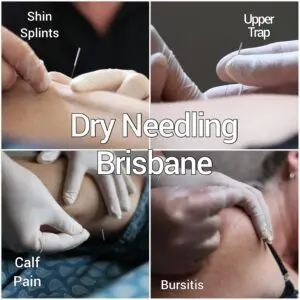
Dry Needling Brisbane
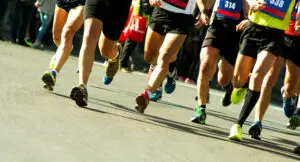
Calf Pain Running
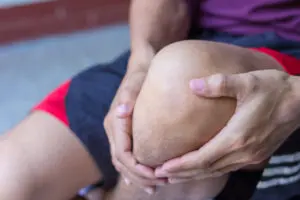
Knee Cap Pain Brisbane

Roger Morelli


Latest posts by Roger Morelli (see all)
- Lymphatic Drainage Massage Benefits - October 18th, 2024
- Lymphatic Compression Pump Therapy Brisbane - October 16th, 2024
- Lymphoedema Brisbane - October 14th, 2024


